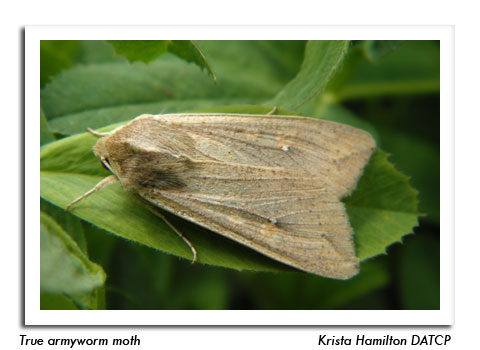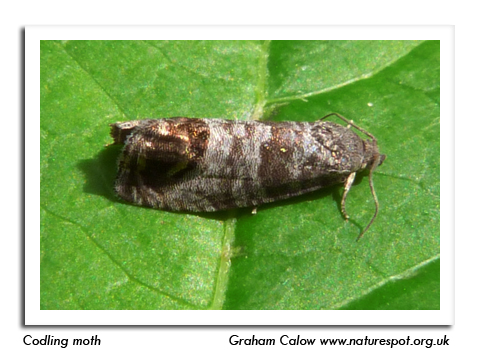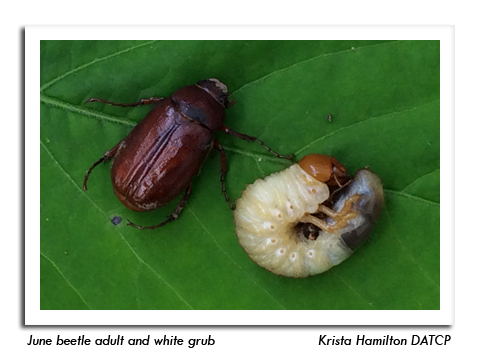
 |
|
|
Looking Ahead
Volume 63 Number 4 Date 05/24/2018 BLACK CUTWORM - The primary damage period for corn is now open and much of the state's acreage is under an elevated threat of larval infestation. Significant planting delays and a sizeable spring moth migration are expected to contribute to localized black cutworm problems in the next 3-4 weeks. Close inspection of cornfields, including Bt hybrids, for evidence of cutworm feeding is recommended from emergence until the five-leaf (V5) stage. A rescue treatment is justified if 3% of plants are damaged. EUROPEAN CORN BORER - Degree day accumulations near Beloit, La Crosse, Lone Rock, Madison and Platteville have surpassed the 374 units (modified base 50°F) required for moth emergence to begin, though peak flights are not expected for another two weeks. Black light trap contents should be closely inspected in the week ahead for early moths. TRUE ARMYWORM - Small flights of 27 and 32 moths have been documented near Janesville in the last two weeks, signaling egg deposition has started. Moths are common in grassy vegetation and a few larvae have been collected in alfalfa sweep net samples. Crop advisors and growers should anticipate armyworm caterpillars migrating into the margins of cornfields by mid-June. CODLING MOTH - Emergence of spring moths began in southern Wisconsin apple orchards this week. Two cooperating sites reported very high counts of 23 and 63 moths, although most did not register a sustained flight. Codling moth flight occurs consistently between 6:00 and 11:00 pm in Wisconsin, and winds must be between 3-5 mph with temperatures above 62°F without rain for mating to occur. Since evening temperatures will be highly favorable for moth activity early next week, daily monitoring is suggested until the biofix is determined. PLUM CURCULIO - Very warm temperatures forecast for next week will provide favorable conditions for plum curculio migration into orchards and egg laying. The first oviposition scars have become evident in orchards past petal-fall. Apple growers are advised to continue examining fast-sizing varieties for the crescent-shaped scars caused by plum curculio egg laying once fruitlets reach 5 mm. JUNE BEETLE - Adult June beetles are emerging and populations could be heavy again this year. Reports from Grant, La Crosse and Monroe counties suggest that full-grown larvae are common in lawns and gardens. Black light trappers can also expect an increase in captures of these insects as local flights escalate this month. -- Krista Hamilton, DATCP Entomologist 





|
|
|